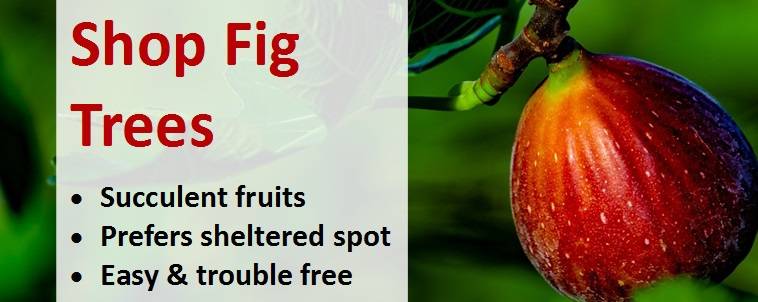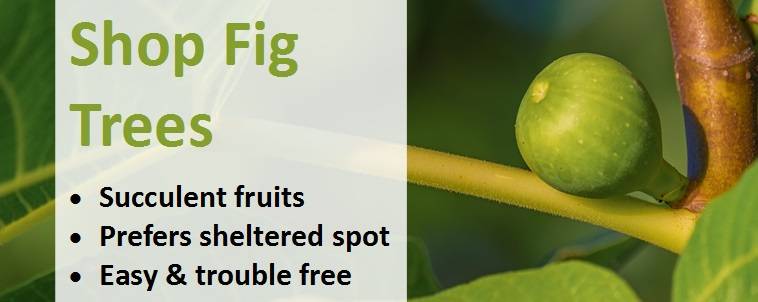How to Grow Your Own Fig Tree
The easy-to-grow, trouble free and enduringly popular fig tree makes a stunning ornamental garden feature and produces bountiful crops of succulent fruits. Native to warm, Mediterranean climates, it thrives in sheltered positions with lots of sunshine and becomes drought tolerant once fully established. Forming a large shrub or deciduous tree (depending on pruning), it boasts large, lush, deeply-lobed almost maple-like fragrant leaves which sometimes develop a rustic appearance in autumn, as well as beautiful smooth crinkly light bark. It is perfect for container growing and will produce more succulent fruit than you can possibly eat once fully grown. There are basically 3 types of edible fig trees. Firstly, persistent (or common) figs, which are self fertile so best for home gardeners. Ficus Brown Turkey is the best and only variety that will reliably grow outdoors in most parts of the UK. Caducous (or Smyrna) figs need to be cross-pollinated by a special fig wasp for the fruit to mature, so are not recommended whilst Intermediate (or San Pedro) figs set an un-pollinated first (breba) crop, but require pollination for the main crop later in the season, so again are not ideal for home growing.
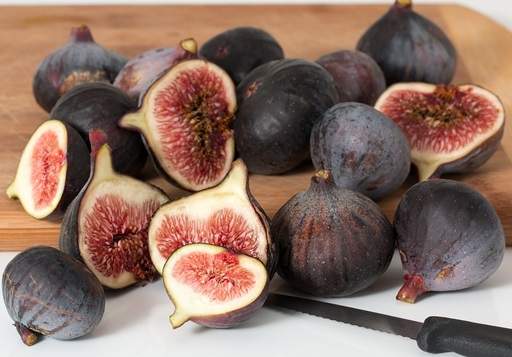
Fig fruit cut open
Recommended Fig Variety
The best fig variety is:
Fig Brown Turkey - Large, architectural leaves and sweet, coppery-coloured fruit with pinkish-white flesh that is ready for picking between August and September. A highly ornamental, deciduous fig that is suitable for training on wires outdoors or under glass and makes a prolific, reliable cropper that can be trained as an espalier and becomes drought tolerant once established. Figs are ripe when the stalk bends and the fruits hangs down and produce a droplet of sugar from the base. Winner of the RHS Award of Garden Merit.
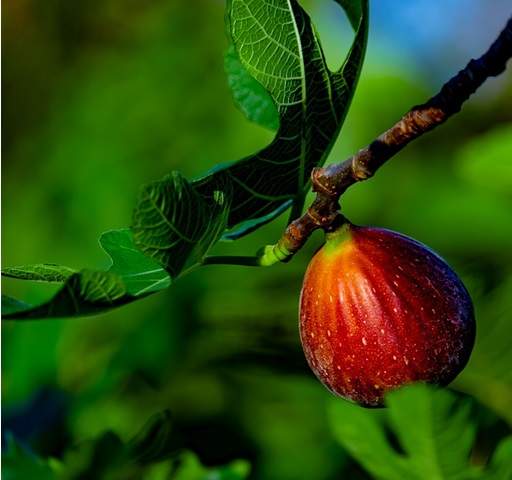
Fruits
Brown Turkey is really the only reliable variety for growing anywhere in the UK, producing a delicious, high quality, sugary and honey-like fig. Brown turkey figs are self-fertile, so you're assured of having figs providing they're planted in a suitable location. Many varieties, again including Ficus Brown Turkey, will theoretically crop twice, although only one is worthy of harvesting. The first crop, known as the breba crop, start forming almost immediately after the autumn (second) crop have ripened, become about hazel-nut sized by November and, in warmer climates, would mature in spring on the previous year's growth. As winters in the UK are too cold to allow them to ripen properly, the breba crop will never reach full size or make good-tasting fruit. It's best to remove them in winter to allow your fig to focus all its energy into producing a more abundant and sizeable second (main) crop.
The main crop will be pea-sized embryos in November but, providing they are not pruned off and protected from harsh frosts, will swell in the spring/summer before ripening into delicious fruits by autumn. These figs will be green initially, turning purple-brown as they swell and becoming soft to the touch and sweet to taste when they are ripe and ready to pick. It's best to frequently harvest figs as they become ripe (or remove them as they become over-ripe) because if left on the tree they will become attractive to fruit beetles and liable to become spoiled. As figs have a habit of dropping all at once, it's best to check your tree regularly; if you have a bigger harvest that you can eat in one go, consider freezing them whole, drying or canning the fruit. Wear long sleeves and use gloves when harvesting figs to prevent the fig sap, an irritant which is exposed when the fruit is removed from the tree, from causing skin irritation.
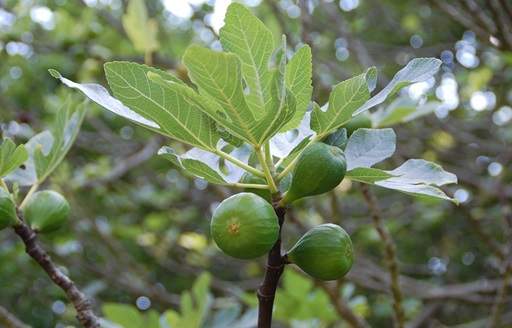
Figs turn from green to purple-brown as they develop and are soft to touch when ripe
Figs can be eaten fresh from the tree, preserved or used in cooking or baking. If you have a bumper crop then dry some of the fruit in a hot press or drying cupboard - if you turn them daily they will be preserved in 6 to 8 days. Fresh figs are high in fibre and vitamins A and C, and dried figs are equally as nutritious. Consider dipping semi-dried figs two-thirds in dark chocolate to create a delicious, rustic dessert.
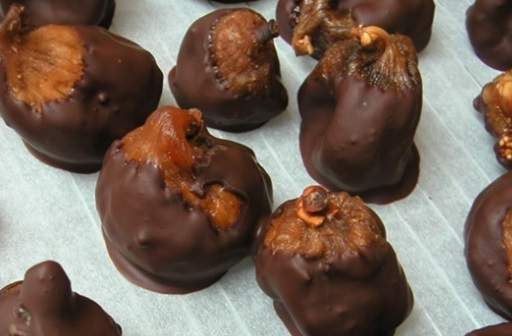
Semi-dried figs dunked in dark chocolate make a great dessert
Fig Tree Planting Advice
Fig trees are best planted just before dormancy is broken in late winter or early spring. Ideally, locate your fig tree along a sunny south or south-west facing wall or fence - this will help to constrain the roots on one side, as well as keeping them warm as the brickwork will retain heat from the sun during the day then radiate it during the cooler evenings. Fig trees prefer a well-drained soil, so ensure the ground does not become saturated at the planting location. If you have a warm city microclimate such as a sheltered courtyard or patio this is particularly well suited to growing figs.
Fig trees have an aggressive rooting system and actually fruit best when the roots are constrained, so it is best to create a restricted planting pit of around 60cm x 60cm x 60cm (2ft x 2ft x 2 ft), or a few inches (10cm) wider than the spread of the roots if this is larger. Root restriction can be achieved by planting your tree in a pot submerged into the ground in your garden or by creating a planting pit using vertical slabs for the sides and rubble or broken bricks for the base. It is best to allow the vertical slabs to stick out slightly above the soil as this will prevent shallow roots from growing over your otherwise impenetrable barrier. Curtailing root growth will stimulate greater fruit production and encourage earlier fruiting, giving your fig plants a better chance of ripening before the cold winter weather moves in.
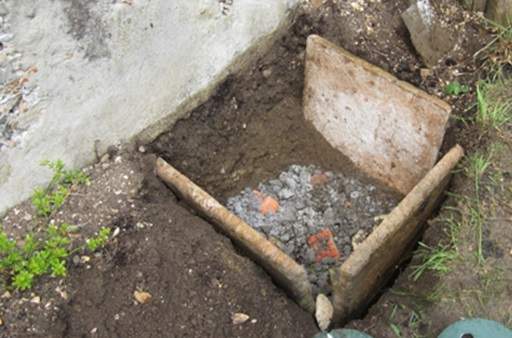
Create a restricted planting pit using vertical slabs for the sides and rubble or broken bricks for the base
When you're ready to plant, remove your fig from its pot and eliminate any circling roots by laying the root ball on its side and easing them out, cutting with garden shears if required. Plant 5-10cm (2-4") deeper than it was in the pot, spreading the roots away from the trunk without excessively bending them and mixing in a generous amount of well-rotted organic matter or loam-based potting compost such as John Innes No 3 compost, particularly if the soil is heavy and dense. Finish by feeding with a multi-purpose fertiliser.
A good alternative to planting your fig tree in the garden is to grow it in a large container on the patio. This not only provides the necessary root restriction, but also means you can move your fig to ensure it gets the good dose of sunshine it needs to fruit to its best. Container grown plants can be more easily moved indoors to protect them from frost and can even be used as a house plant for the colder months of the year until they become established (by which time they will be too large). Figs are best planted into containers from March to April in a pot one size larger than the original, using a loam-based potting compost such as John Innes No 3 mixed with bark chippings to improve drainage. Move the pot to its final position before potting up the plant, as it is likely to be heavy once filled and watered, and try to keep the main part of the root ball intact to minimise root disturbance. Re-potting is likely to be required every third year once established.
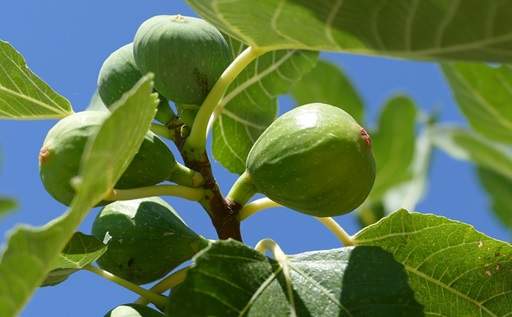
Figs are wells-suited to being container grown as root restriction encourages a stronger crop
Garden Care
Watering
Whilst fig trees do not like to stand with wet feet, they do require regular watering to prevent drying out, particularly as they have a shallow root system close to the soil surface. Slight leaf wilting and fruits that drop prematurely are both indications of drought stress, so if you see these signs, more regular watering is going to be needed. Mulching in late spring and mid-autumn with a well-rotted garden compost, farmyard manure or organic matter will help to increase soil moisture retention and reduce weed competition.
Feeding
Figs do not require regular fertilising at any time other than the period when the fruits really start to swell, unless container grown, in which case a balanced, liquid feed should be applied 3 to 4 times per year. Apply a high potassium liquid feed weekly as the fruits start to swell (tomato feed is ideal). Aside from this, a single annual slow-release, multi-purpose feed or a few handfuls of fish, blood and bone fertiliser spread over the ground surrounding your plant will be sufficient for plants grown out in the garden, best applied in spring. Containerised plants will need to be fed every week during the growing season, although be careful to avoid excessive application of nitrates as this can have a negative impact on fruit quality.
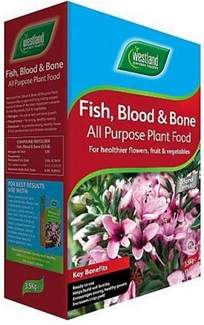
Spread a few handfuls of fish, blood and bone fertiliser around your fig tree annually in spring
Winter Frost Protection
Whilst figs are surprisingly winter hardy, they do require some protection from cold frosts. Mulching in mid-autumn will help to protect the crown from killing winter frosts, but this will need to be accompanied by a generous wrap of horticultural fleece, blankets or another breathable material when frost is forecast. An often easier alternative for young container-grown plants is to move them indoors to a shed, greenhouse or outbuilding, although this may become impracticable after your fig has been re-potted into a large container as it becomes established.
Pruning
Prune annually after the fruit has been harvested in late autumn / winter during the first few growing seasons to foster an open, vase-shape with 3-4 leading branches. Thereafter, simply remove any dead, damaged, weak, diseased or crossing branches and prune only to stimulate new growth and control size. If you decide to keep your fig tree small, don't be afraid to prune back vigorously every third year, accepting that it's worth losing some fruit to keep your plant under control - fig trees will respond well to hard pruning if they need to.
Formative pruning should create a goblet-shape which allows plenty of light into the centre of the plant, so any dead or crossing stems or those heading into the middle of the plant, as well as thin, spindly shoots that will never do any good should be removed. Suckers at the base of your fig should be removed if you prefer to retain a tree-form (they make great cuttings) or can be left on if you prefer your fig to develop into a large bush. Unless it is being done deliberately to control size, be wary of being over-zealous with your pruning as this will result in lighter crops the following season, particularly as figs bear fruit on the previous year's growth.
Any figs left on the plant in winter which are larger than pea-sized should be removed - they will not ripen ready for spring and will instead act as a drain on the plants energy, so are far best pulled off and added to the compost heap. The remaining tiny, embryo fruit towards the ends of the shoots will over-winter and, providing they have protection from icy snaps, will ripen the following autumn. Pinching out growing tips in spring to slow the trees growth will encourage your plant to invest more energy into swelling the August fruits (anything more than this will result in fruit being removed).
Comments
Share this page:

